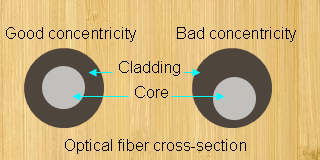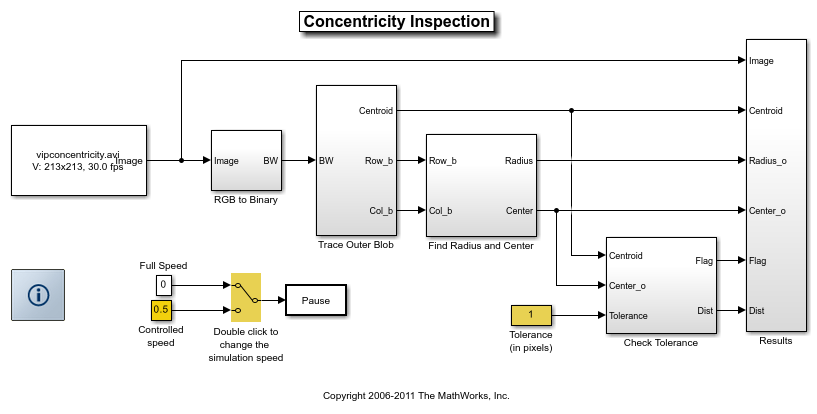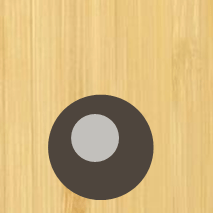同心度検査
この例では、光ファイバーの断面におけるコアとクラッド両方の同心度を検査する方法を説明します。同心度は、クラッド内でコアがどれだけ中央に揃っているかの評価基準です。
この例では、まず Blob Analysis ブロックを使用してクラッドの重心を求めます。この重心を使用して、クラッドの外部境界上の点を検出します。これを開始点として、Trace Boundaries ブロックがクラッドの外部境界を定義します。その後、これらの境界点を使用して、最小二乗の円当てはめアルゴリズムによりクラッドの中心と半径を計算します。クラッドの重心とその外部境界の中心の距離が特定の許容誤差内にある場合、その光ファイバー ケーブルは許容できる状態にあります。
次の図は、同心度が良好な光ファイバーと、そうでない光ファイバーの例を示します。

モデル例
次の図は同心度検査のモデル例を示しています。
open_system('vipconcentricity');

同心度検査の結果
[Results] ウィンドウに、クラッドの重心が赤い「+」でマークされているのがわかります。クラッドの外部境界の中心は緑の「*」でマークされています。この 2 つのマーカー間の距離が許容誤差内にある場合は、光ファイバー ケーブルの断面に次のラベルが付けられます。"Concentricity: Good"。そうでない場合は次のラベルが付けられます。"Concentricity: Bad"。また、クラッドの重心とクラッドの外部境界の中心の距離もピクセル単位で表示されます。
close_system('vipconcentricity'); sim('vipconcentricity', 0.0333333); set(allchild(0), 'Visible', 'off'); captureVideoViewerFrame('vipconcentricity/Results/Original'); captureVideoViewerFrame('vipconcentricity/Results/Results');


close_system('vipconcentricity', 0);